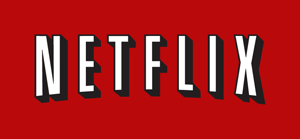 It was just two weeks ago that Netflix put out their that showed that Comcast customers had suffered some major degradation in the streaming service. Once on the top, the ISP was now in the fourteenth position with just 1.51Mbps rates. As a subscriber to both services, I could attest to more pausies in the service not to mention degraded signals from time to time that previously did not happen. Now Netflix and Comcast have announced a deal that should improve the streaming service on the largest ISP in the United States. So, what’s the catch to this new arrangement?
It was just two weeks ago that Netflix put out their that showed that Comcast customers had suffered some major degradation in the streaming service. Once on the top, the ISP was now in the fourteenth position with just 1.51Mbps rates. As a subscriber to both services, I could attest to more pausies in the service not to mention degraded signals from time to time that previously did not happen. Now Netflix and Comcast have announced a deal that should improve the streaming service on the largest ISP in the United States. So, what’s the catch to this new arrangement?
The Deal
The essence of the deal between Netflix and Comcast is was is called a private peer agreement. These peering agreements that have been in existence for decades and form the basis of the internet. In essence, the internet is built up by a number of backbone providers, such as Cogent and Level 3, that control the major pipes between large network hubs. To facilitate the movement of traffic from one network to another, they create peer agreements that allow the traffic to be shared between them. Now ISPs and services providers like Netflix and Comcast connect to these backbones. So in essence, the backbone provider is a third party that carries the traffic between the two networks.
So, what have the two companies done? In essence, they have stated that they are going to peer directly between their two networks, Comcast and Netflix, so that the traffic does not have to traverse a third party network such as Cogent. What this does is allow less congestion of Netflix’s streaming content when getting to Comcast’s network because it does not have to share that general pipe through the backbone providers. This supposedly does not give Netflix’s content preferred treatment once on Comcast’s network but bypasses that general network congestion.
The Good
If you happen to be a subscriber to Netflix on the Comcast network, you will likely see performance of the streaming quality improve once the peer network has been established between the two companies. This is going to be extremely beneficial for those people hoping to get the 4K streaming of Netflix content such as House of Cards season 2 as it requires a greater amount of bandwidth. Those streaming the standard definition or even high definition content won’t likely see an improvement in picture quality but they will probably see less instances of buffering or pauses in their videos.
The Bad
Obviously, this peering agreement is going to cost money, but the question is who is paying for it? In the past, ISP’s such as Comcast typically would upgrade their network infrastructure to handle the network traffic of their customers. After all, if your network encountered a lot of lag, consumers would potentially switch away from your ISP to another one. The difference here is that Comcast seems to have avoided this and waited until Netflix essentially could not wait to let the largest ISP let its customers have degraded service and potentially lose its subscribers from Comcast’s insufficient network.
So, the cost of the peering agreement is likely going to be forced upon Netflix instead of Comcast. The end result is that Netflix revenues will take a hit to get the peering established and working. To make up those costs, Netflix will have to spread those costs out to all their customers, including those not subscribed to Comcast. Netflix has yet to announce any changes in price but it certainly is a cost that has to be taken out of its revenues.
But what about Net Neutrality? Technically, this avoids that whole issue not because of the rules being overturned by the courts just last month. The reason is that Comcast is not giving preferential treatment to the data in their network which was the intent behind the ruling. Instead, it is simply forming a deal that expands their traffic capabilities with direct pipes for the Netflix streaming to avoid the congestion across the backbone to their network. In essence, private peering agreements don’t fall under the rules.
What Does This Mean For Netflix, Content Providers And Other ISPs?
Now that this deal has set a precedent, it is likely that Comcast may try to form similar peering agreements with other high traffic content providers. This could be services such as Facebook, Amazon and even Hulu could eventually be forced to make an agreement to improve their performance on Comcast’s network in the hopes of not losing customers to their competitors that do make such an agreement.
Netflix is also going to be pressured by other ISPs that they feel may have below average numbers. After all, they made a deal with Comcast so why not them. The most likely candidates would be Verizon which was at the bottom of the list and was one to file the case that overturned Net Neutrality. AT&T would probably be another candidate to make such a maneuver.
Only time will tell what the fallout of this agreement could be but it looks like consumers are likely going to bear the brunt of it in higher costs for services.